Knowde Enhanced TDS
Identification & Functionality
- Chemical Family
- Plastics & Elastomers Functions
- Technologies
- Product Families
Features & Benefits
- Materials Features
- Features
PELECTRON PVL has the following features:
- Imparts an excellent antistatic property (the ability to prevent problems such as dust and electrostatic faults) to polyolefin when the amount added is between 5 and 20 wt %.
- Imparts an excellent antistatic property to polyethylene and polypropylene for films and sheets while causing practically no lowering of their physical properties.
- Exhibits a long-lasting antistatic property immediately after molding. The antistatic property in the resulting plastic minimally changes even after washing with water because it is a highmolecular- weight antistatic agent. In addition, it works even in low humidity due to its low dependency on humidity.
- This product dry-blended with polyolefin can be directly molded without a kneading process because this product exhibits excellent dispersibility in polyolefin, particularly polyethylene.
Applications & Uses
- Applications
- Compatible Polymers & Resins
- Plastics & Elastomers End Uses
- Plastics & Elastomers Processing Methods
- Application Methods
1. General Procedure
As shown in Figure 1, polyolefin and PELECTRON PVL are dry-blended using a blender. This blend is then molded using an appropriate molder (e.g., an extruder). Fillers and dispersants can be added during the dry-blending process if necessary.
Figure 1. General Procedure for Application of PELECTRON PVL
2. Amount to be Used
The standard amount of PELECTRON PVL is between 5 and 20 wt %.
Determine the optimal amount by referring to the results of its performance tests.3. Kneading Conditions
Use a high share rate kneader (e.g., a twin-screw extruder) if the kneading process is
required. The standard kneading temperature is between 180 and 230 °C (356 – 446 °F). Determine the kneading temperature according to the resin applied.4. Drying of PELECTRON PVL
- This product can be immediately used after the factory sealed package is opened because this product is packed under moisture-proof conditions.
- Drying is necessary when the factory sealed package is kept unsealed for several hours because this product has some hygroscopic properties. The following are examples of the conditions for drying.
We recommend that you should use a hopper dryer or dehumidifying dryer during the molding process. (because there is a possibility that fisheyes, blisters and silver streaking will occur on
- molded products of PELECTRON PVL and resins if the water content of the mixture exceeds 500 ppm).
Drying under reduced pressure
Vacuum Below 1,300 Pa (0.2 psi) Temperature 70 – 80 °C (158 – 176 °F) Duration 2 – 4 hours Hot-air drying
Temperature 85 – 95 °C (185 – 203 °F) Duration 4 – 6 hours 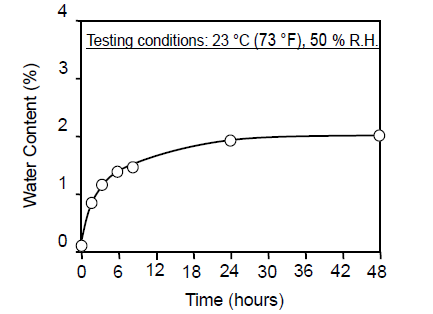
Figure 2. Hygroscopic Properties of PELECTRON PVL
Precaution Against Mishandling
- In the case of using resins at molding temperatures below 170 °C (338 °F), PELECTRON PVL may not fuse, possibly resulting in poor effectiveness. Furthermore, in case of using resins at molding temperatures above 240 °C (464 °F), this product may thermally decompose, possibly resulting in poor effectiveness. The recommended molding temperature is between 170 and 230 °C (338 – 446 °F).
- Depending on the kind of resin, this product may have an effect on the resin's physical properties including mechanical properties. Test the effects on each of the physical properties beforehand to ensure that there are no problems.
- Examples of Applications
PELECTRON PVL has been used as a permanent antistatic agent in polyolefin in the following applications:
- Blown films, sheets, trays, etc. for e lectric and electronic parts.
- House hold electrical goods (TV, air conditioners, air purification systems, etc.), office equipment, etc.
- Floor materials, protector films, base materials for tapes, etc.
Properties
- Appearance
- Pale yellow pellet
- Typical Properties
| Value | Units | Test Method / Conditions | |
| Melt Flow Rate (at 190°C 374°F, 21.18 N) | approx. 20 | g/10min | ASTM D 1238 |
| Melting Point | approx. 135 (275) | °C(°F) | — |
| Surface Resistivity | approx. 3 × 10^6 | Ω | — |
| Thermal Degradation Temperature | approx. 250 (482) | °C(°F) | — |
Technical Details & Test Data
- Performance Tests
The examples on pages 4 to 9 are the results of performance tests using polyolefin mixed with PELECTRON PVL. This product imparts a long-lasting antistatic property to polyolefin that cannot be attained by any other conventional blend-type, low-molecular-weight antistatic agent. In addition, compared to conventional permanent antistatic agents, this product exhibits an excellent antistatic property even
when used in small amounts. Furthermore, this product minimally affects physical properties of polyolefin and its fluidity in molding because this product exhibits excellent dispersibility in polyolefin.1. Application to Low-Density Polyethylene (LDPE)
A. Relationship Between Amount of PELECTRON PVL and Resulting Surface Resistivity
LDPE containing PELECTRON PVL is highly antistatic when the amount of this product added is between 5 and 20 wt %. Refer to Figure 3 and determine the optimal amount according to the desired surface resistivity.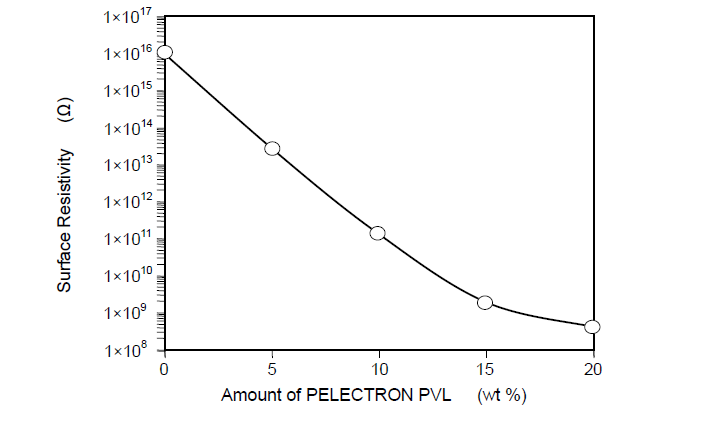
Figure 3. Relationship Between Amount of PELECTRON PVL and Surface Resistivity
Materials and Methods:
Materials:
A predetermined amount of PELECTRON PVL was dry-blended with the LDPE* and the mixture was molded using an extruder [die temperature: approx. 200 °C (392 °F)] into sheets 100 μm (approx. 3.9 mils) in thickness.
Method:
Each sample was kept at 23 °C(73 °F), 50 % R.H. for 24 hours. Then, the surface resistivity of each was measured using a megohmmeter according to ASTM D 257.
* Melt flow rate (film type of LDPE): 2 g [10 min, 190 °C (374 °F), 21.18 N]B. Effect on Surface Resistivity When Washed with Water (Evaluation of Durability of Antistatic Effect) The surface resistivity of the LDPE blended with PELECTRON PVL minimally changes even when washed with water, remaining antistatic. This product imparts a long-lasting antistatic property that cannot be attained by any other conventional blend-type, low-molecular-weight antistatic agent, which loses its antistatic property after being washed with water approximately three times.
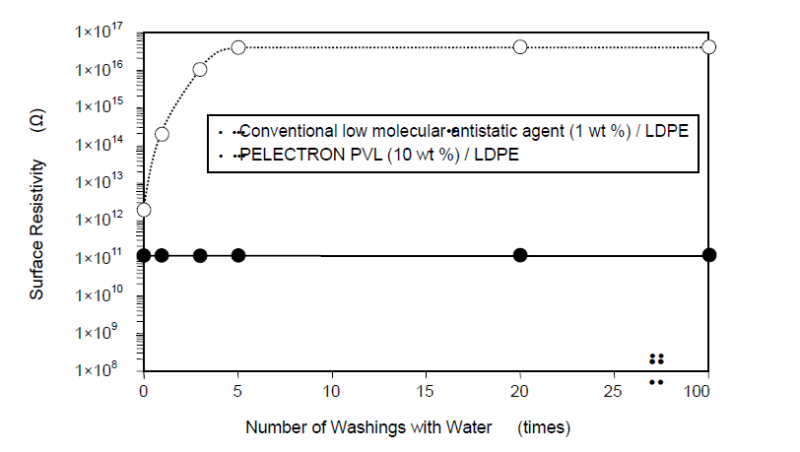
Figure 4.Effect on Surface Resistivity When Washed with Water
Materials and Methods:
Materials:
PELECTRON PVL (10wt %) / LDPE
PELECTRON PVL (10 wt %) was dry-blended with the LDPE, and the mixture was then
molded using an extruder [die temperature: approx. 200 °C (392 °F)] into sheets 100 μm (approx. 3.9 mils) in thickness.
Conventional low-molecular-weight anionic antistatic agent (1 wt %) / LDPE
A conventional blend-type, low-molecular-weight antistatic agent, a Sanyo Chemical product, was used. It was dry-blended with the LDPE, and the mixture was kneaded using a twinscrew extruder at approx. 220 °C (428 °F). These samples were prepared by using the molding
method described above.
Method:
Each sample was submerged in water and its surface was rubbed with a cotton cloth. The samples were dried under reduced pressure [133 Pa (0.02 psi)] at 70 °C (158 °F) for 2 hours. They were kept at 23 °C (73 °F), 50 % R.H. for 24 hours, and then the surface resistivity was measured using a megohmmeter according to ASTM D 257. This process was repeated according to the number of washings with water as described in Figure 4.C. Effect of Humidity on Surface Resistivity
The surface resistivity of the LDPE blended with PELECTRON PVL minimally changes even in low humidity due to this product’s low dependency on humidity. Conversely, an LDPE blended with any other conventional low-molecular-weight antistatic agent loses its antistatic property in low humidity.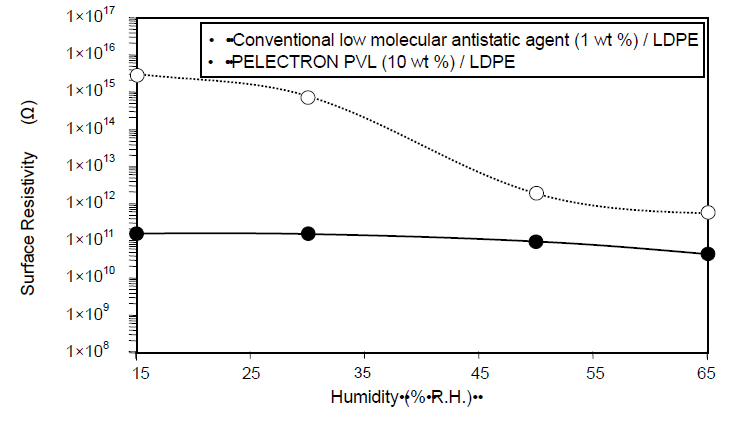
Figure 5. Effect of Humidity on Surface Resistivity
Materials and Methods:
Materials:
Samples were prepared under the same conditions described for Figure 4.
Method:
Each sample was kept at 23 °C (73 °F) at a predetermined humidity for 24 hours. Then, the surface resistivity of each was measured using a megohmmeter.D. Examples of Resin Physical Properties
As shown in Table 1, PELECTRON PVL minimally affects the LDPE physical properties.Property Method PELECTRON PVL
(10 wt %) / LDPELDPE Surface resistivity Ω ASTM D 257 1 × 10^11 > 10^16 Melt flow rate
[10 min, 190 °C (374 °F), 21.18 N] gASTM D 1238 3 2 Tensile strength MPa (psi) ASTM D 638 21 (3,050) 20 (2,900) Fracture elongation % ASTM D 638 590 580 Haze % JIS K 7105 35 34 Total light transmittance % JIS K 7105 86 86 Materials and Methods:
Materials:
Surface resistivity
PELECTRON PVL (10 wt %) was dry-blended with the LDPE, and the mixture was molded using an extruder [die temperature: approx. 200 °C (392 °F)] into sheets 100 μm (approx. 3.9 mils) in thickness. LDPE was also molded under the same conditions.Melt flow rate
The above molded materials were cut into pellets, and used as samples.
Other mechanical properties
Samples were prepared under the same conditions except that the predetermined size described in ASTM D 638 was applied to measure the tensile strength and fracture elongation.
Methods:
See the ASTM No. or JIS No. described in Table 1.
(The testing method for surface resistivity is described in the method for Figure 3.)E. Dispersibility of PELECTRON PVL in LDPE
As shown in Figure 6, PELECTRON PVL is finely dispersed in the LDPE.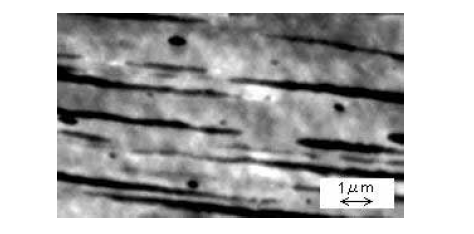
Figure 6. Transmission Electron Micrograph of Molded Resin (TEM photo) Composed of PELECTRON PVL (10 wt %) and LDPE
[Explanation of Photograph]
Black stripes: PELECTRON PVL
Figure 6 is a magnification (approx. 10,000 times) of a section of the PELECTRON PVL
(10 wt %) / LDPE mixture described for Figure 4.2. Application to Other Resins
PELECTRON PVL imparts a long-lasting antistatic property to extrusion molding type HIPS (high impact polystyrene). The compatibility of this product with this resin is excellent, and the physical properties of this resin show minimal change.
A. Relationship Between Amount of PELECTRON PVL and Resulting Surface Resistivity HIPS containing PELECTRON PVL is highly antistatic when the amount of this product added is between 5 and 20 wt %. Refer to Figure 7 and determine the optimal amount according to the desired surface resistivity.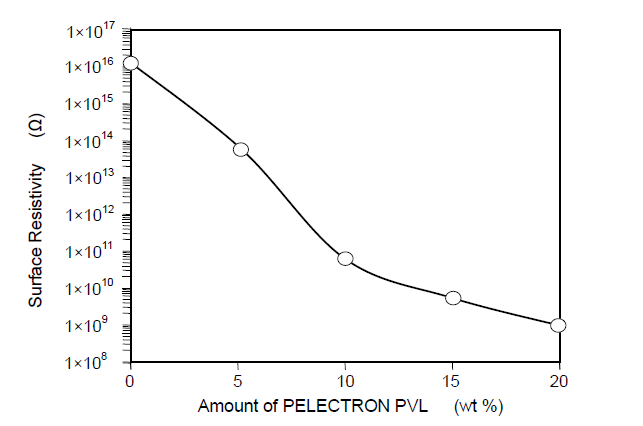
Figure 7. Relationship Between Amount of PELECTRON PVL and Surface Resistivity
Materials and Methods:
Materials:
A predetermined amount of PELECTRON PVL was dry-blended with the HIPS*, and the mixture was molded using an extruder [die temperature: approx. 220 °C (428 °F)] into sheets 100 μm (approx. 3.9 mils) in thickness.
Method:
Each sample was kept at 23 °C(73 °F), 50 % R.H. for 24 hours. Then, the surface resistivity of each was measured using a megohmmeter according to ASTM D 257.
* Melt flow rate (extrusion molding type of HIPS): 2.6 g [10 min, 200 °C (392 °F), 49 N]B. Effect on Resin Physical Properties
As shown in Table 2, even when PELECTRON PVL is added to HIPS, the physical properties of this resin show minimal change.Property Method
(ASTM No.)PELECTRON PVL
(10 wt %) / HIPSHIPS Surface resistivity Ω D257 6 × 10^10 > 10^16 Tensile strength MPa (psi) D638 24 (3,480) 28 (4,060) Fracture elongation % D638 121 104 Materials and Methods:
Materials:
PELECTRON PVL (10 wt %) / HIPS
Surface resistivity: A predetermined amount of PELECTRON PVL was dry-blended with the HIPS and the mixture was molded using an extruder [die temperature: approx. 220 °C (428 °F)] into sheets 100 μm (approx. 3.9 mils) in thickness.
Others: Samples were prepared by the same method described above except that the predetermined size described in ASTM was applied. HIPS
Samples were prepared under the same conditions described above except that HIPS was only used.
Methods:
See the ASTM No. described in Table 2.
(The testing method for surface resistivity is described in Figure 7.)
Safety & Health
- Hazards Description
PELECTRON PVL is a polyether-polyolefin block copolymer. Vapor or fume from molten material causes eye and nose irritation. This product is for industrial use only.